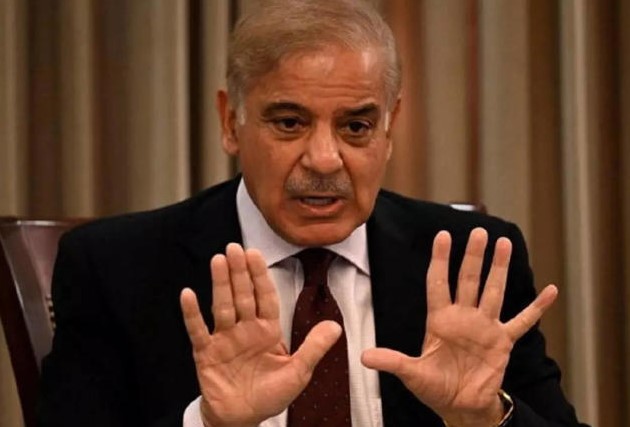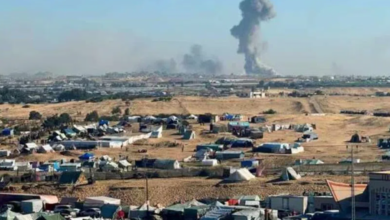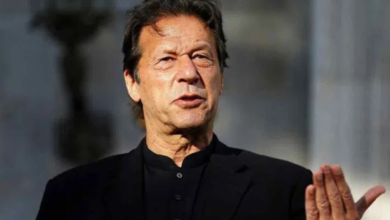Pakistanis Becoming Poorer, 35.37% Inflation Historic High as Figures Show Economic Crisis Likely to Worsen

The one economic indicator that directly affects the public is retail inflation figures, commonly known as consumer price inflation (CPI). Pakistan’s inflation touched a historic high of 35.37 percent in March, shows data released by the Pakistan Bureau of Statistics.
Inflation directly affects livelihoods – prices of food items go up but not incomes. High inflation starts a cycle, which first targets common people restricting their needs, forcing them to rebalance their lives with limited financial resources. Reduced spending means restricted flow of money in the economy. If inflation persists for a longer duration, which is happening in Pakistan over the past year, it slowly starts affecting the whole economy.
A more worrying aspect is the astoundingly high level of the sensitive price index (SPI) indicator in the country. The State Bank of Pakistan defines SPI as a tool “to assess price movement of essential consumer items at short intervals (on weekly basis) so as to take corrective measures”. Also called food inflation, it monitors price movements of 51 essential items, including food items, diesel and petrol.
This year, the SPI has mostly been above 40 percent. In the latest data release, the SPI has reached a record level of 47.23 percent in the week ending April 19. Given the present crisis, it can even cross the 50-percent mark soon. Higher SPI means increased prices for all essential items, which are basic minimum tools to support a common person’s life.
According to media reports from Pakistan, Eid celebrations were largely affected with people either having no money or facing a curtained shopping budget. A report in Pakistani news outlet Dawn stated that the prices of wheat flour went up by 144 percent year-on-year basis in the week ending April 19; diesel prices went up by 103 percent; petrol by 88 percent; potatoes by 99 percent; bananas by 99 percent; eggs by 98 percent; broken basmati rice by 87 percent; and moong pulse by 69 percent.
In Pakistan, prices of all essential items such as food, medicine, transportation, and electricity have massively gone up. Shortage of food items and fuel has only added to this crisis. Pakistan imports most of these items but the country is facing a huge cash crunch; and a food crisis, seen in some parts of the country so far, may stay longer and affect more areas.
Income of Pakistanis to go down this year
Economic experts said increased energy, petrol, diesel and electricity prices, increased tax rates and massive PKR (Pakistani rupee) depreciation were major factors behind sky-high SPI figures. The country desperately needed IMF loans, but these are conditional, they added.
The agency has first demanded that the Pakistani government should take strict action to manage its balance sheet by generating revenue like reduced subsidy, increased energy prices and increased tax rates. Pakistan has implemented many of these conditions even if it means tougher and harsher living conditions imposed on its people, who are becoming poorer by the day.
The income level of each Pakistani is slated to significantly go down this year. According to World Bank estimates, each Pakistani’s average annual income was expected to come down to $1,399.1 in the fiscal year 2022-23, which is a 13.3 percent drop from what each Pakistani earned in 2021-22 at $1613.8.
The bank said the poverty rate in the country was expected to be 37.2 percent and the country has added 3.9 million more poor people since 2018. It looks like a tough situation for a country sliding into dire poverty when 21.1 percent of the adults are still without primary education. An uneducated population base means the grip of poverty is expected to stay for a longer duration.
The situation is expected to get more difficult in the years ahead. Pakistan’s GDP (gross domestic product) growth rate is expected to see a massive dip this fiscal. According to the SBP, the country’s economy grew by 6 percent in 2021-22. The World Bank projection brought it down by 93.33 percent for 2022-23, at 0.4 percent. The IMF, in its latest forecast, predicted that the country will grow by 0.5 percent while ADB estimates said it is slated to grow by 0.6 percent.
The country is facing a historically low foreign exchange reserve of $4.46 billion that can import just a month of essential items, historically high PKR to USD exchange rate at 283, and external debt of $126 billion. An analysis by US-based think tank, United States Institute of Peace (USIP), stated that the country needs to repay $77.5 billion in external debt from April 2023 to June 2026.







